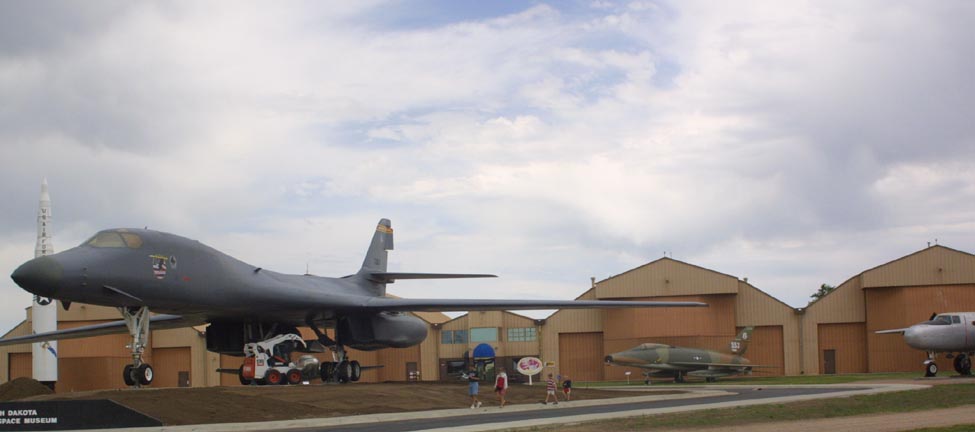
|

|
The front end of a B-29 bomber. This is the
world's first nuclear bomber, though such a thing was not envisioned when
these aircraft were designed. Enola Gay, and Bock's Car, the bombers the
only bombers to ever release nuclear weapons, were both B-29s.
|

|
The b-29 was pressurized, and could fly at very
high altitudes. 3960 of these planes were built, and they remained in service
until 1960. The planes could fly above 40000 feet. This plane could fly over
5000 miles, or carry up to ten tons of bombs, though it could not do both
at once.
|
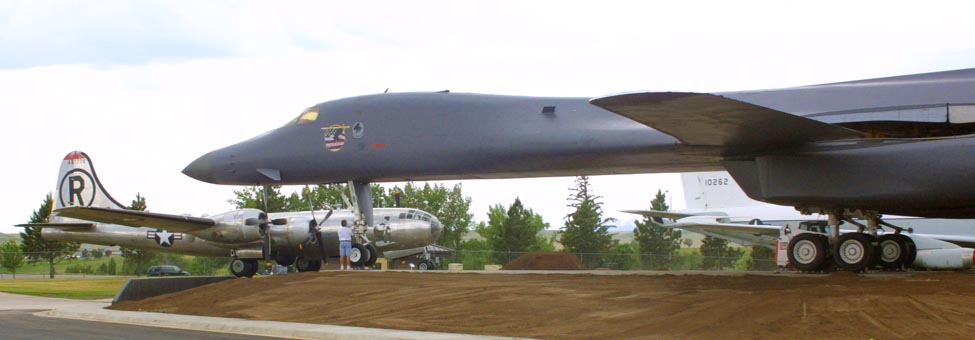
|
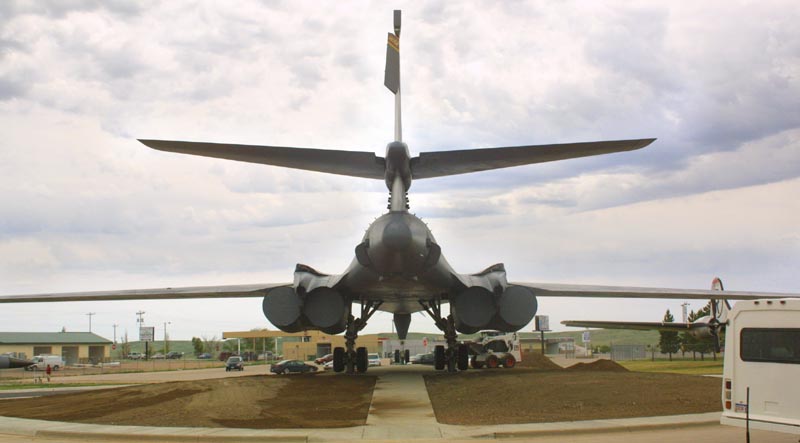
|
Above:
The above photo shows our newest Nuclear bomber, the B-1, with our oldest
nuclear bomber, the B-29 in the background.
Left::
The tail end of the B-1. These aircraft can carry huge bomb loads, very
long distances, and have a very small radar signature. The original design
was supersonic, and very high flying. Today's new B-1 flys very low, and
just a bit under mach -1. This is in recognition of today's more effect anti
aircraft armament.
Below:
The B-1, and the Minuteman
|
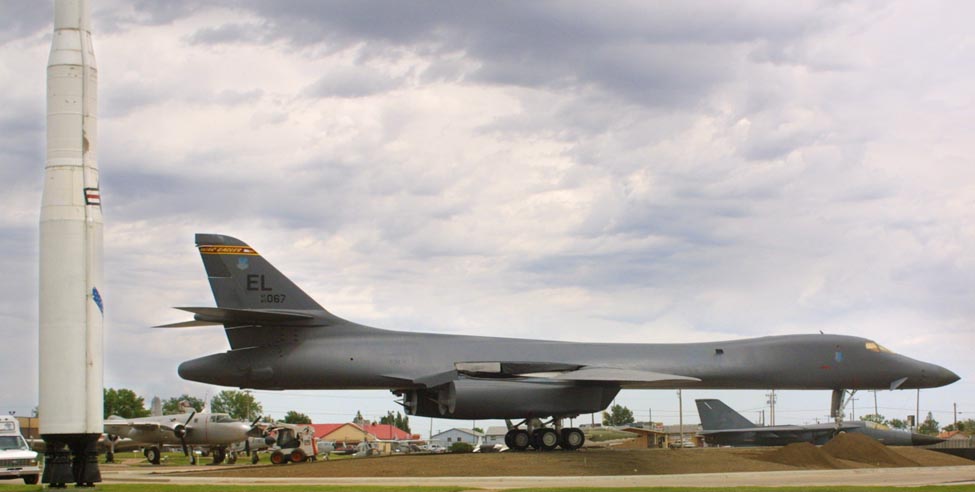
|
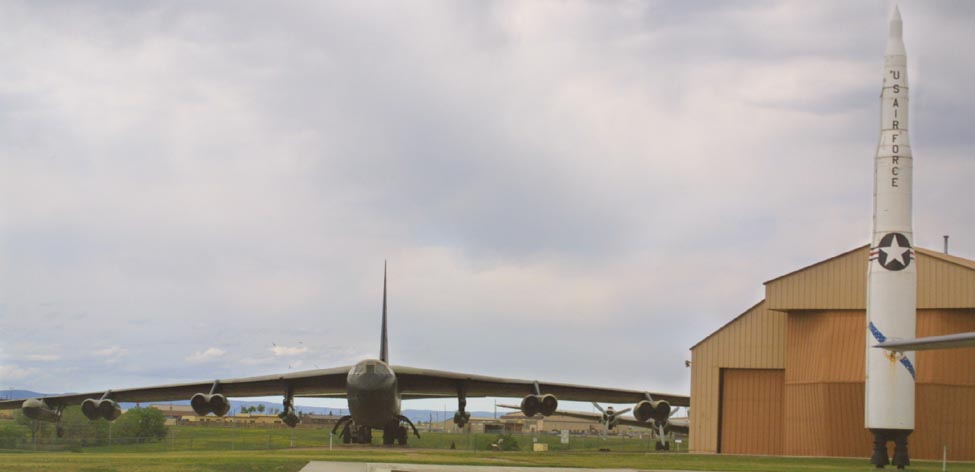
|

|
Above:
The B-52, bomber, and the Minuteman ICBM. For three decades, these were
the land based components of our nuclear deterrent.
Left:
The B-52 bomber.
|
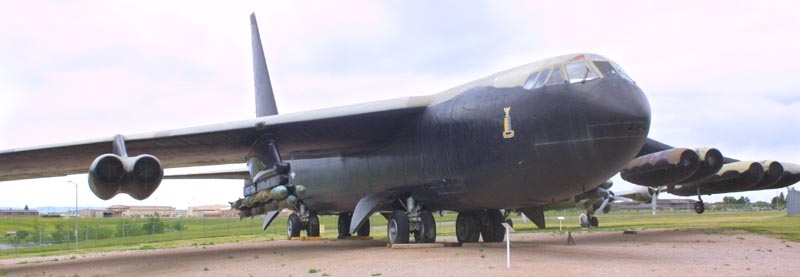
|
This is our most well known, and longest lived bomber.
The planes have been constantly upgraded through a series of different models.
Though the first examples flew in 1952, these older models are all retired.
Today's B-52 force was produced in the sixties. Upgrades will allow these
planes to remain in service until 2040, making them 75 years old, upon retirement.
|
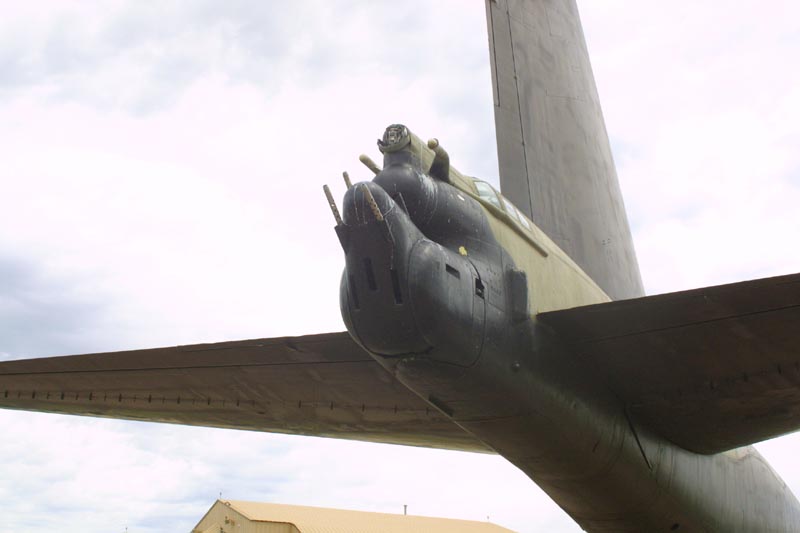
|
In case anyone would think of trying to sneak up
behind one of these aircraft, it might be better to think twice.
|
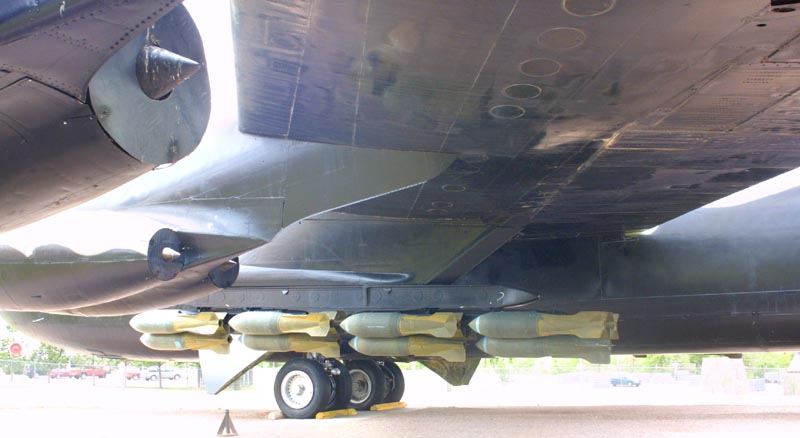
|
A retired B-52 on display seems ready to take off
on a mission, with a number of iron bombs slung under it's drooping wings.
The wings droop 27 feel, when fully loaded with bombs, and fuel. There are
wheels near the wing tips, to prevent the wings from scraping the ground on
take off.
|

|
A KC-135 tanker. THis plane is based upon a jet
airliner of the sixties, and is a welcome sight to the pilot of a thirsty
jet fighter or bomber. At the back of the aircraft, can be seen the winged
boom, which is flown by a controller to mate with a feeding jet.
|

|
This is an F-111, the original swing wing bomber.
These aircraft were designed in the early sixties, and deployed in the mid/late
sixties. There were some teething issues, since many of the features, including
the swing wing, were just being developed. These aircraft had performance
on a par with the best fighters of the day, and are still in active service.
|
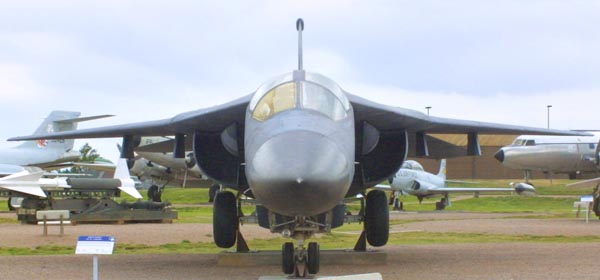
|
A front view of the F-111, shows that pilot
and copilot sit side by side. Though officially considered to be part of
our strategic bombing force, these planes have flown many standard combat
mission.
|

|
This is a Voodoo, the progenitor of the amazing,
and long lived Phantom interceptor. The Voodoo was one of the early nuclear
capable aircraft, and was a major delivery system for nuclear weapons, during
the fifties.
|
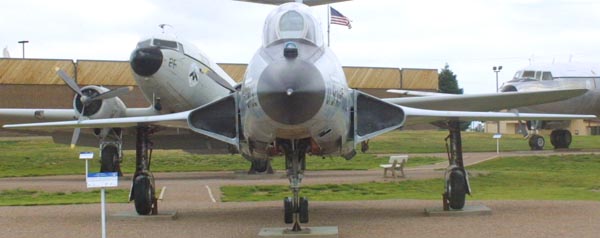
|
A front view of the Voodoo, shows it to have a very
small profile, head on.
|
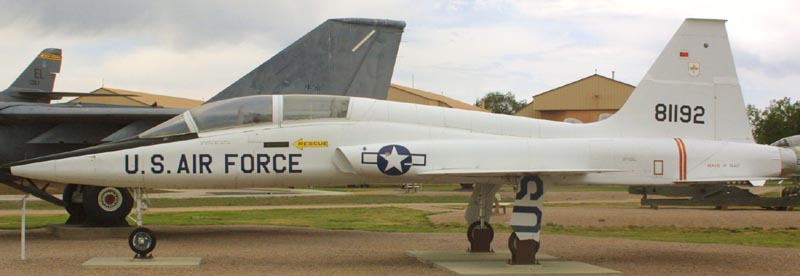
|
This is a T-37 supersonic trainer. The aircraft
is unarmed, and was developed in the early fifties. It is the Air Force pilot's
introduction to supersonic flight. There is an armed combat version of this
place, called the F-5 Tiger, as well as an improved armed version know as
the F-20 Tigershark. The combat version has never been used by the United
States.
|
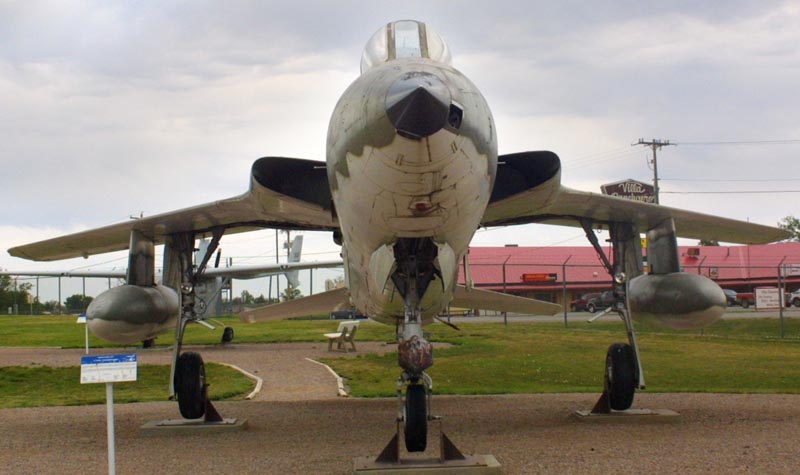
|
This is a head on view of the F-105 Thunderchief.
This was the first supersonic fighter-bonber, and features a large internal
bomb bay. These planes carried out the bulk of the Air Force missions over
Veit Nam. The Thud, as it was called, was introduced into service in 1955,
and was retired in 1981.
|
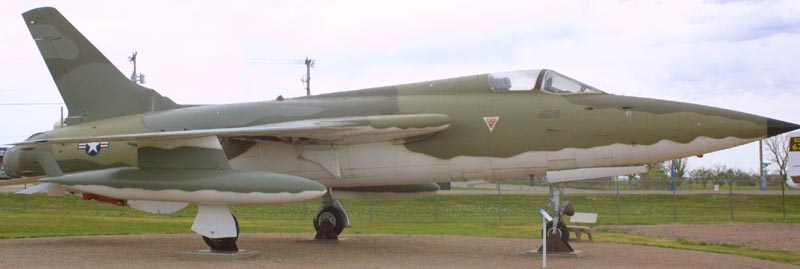
|
A side view of the Thunder chief, one of America's
early nuclear capable aircraft.
|
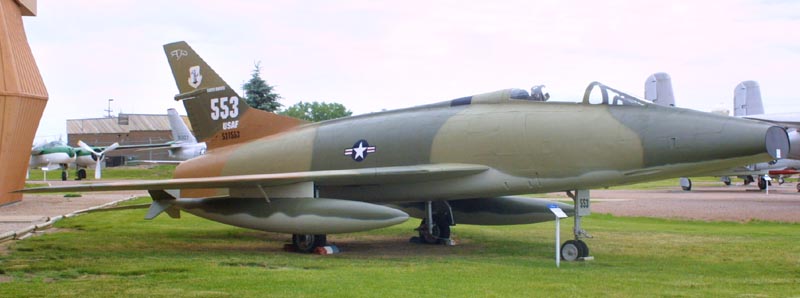
|
This is an F-100 Super Sabre. This was a nuclear
capable aircraft, designed as a replacement for the F-86 Sabre, during the
KOrean War. It first flew during the Veit Nam War.
|
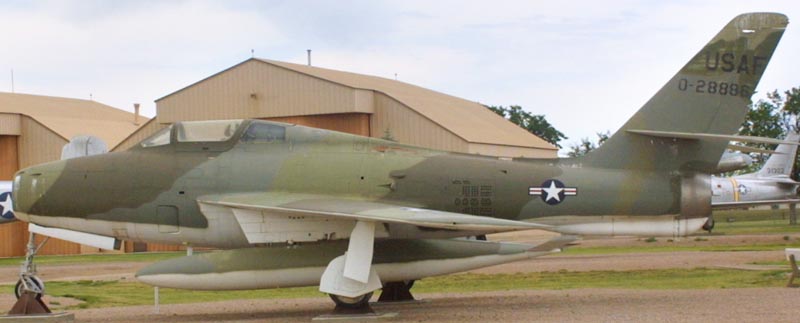
|
This is an F-86 Sabre, America's first swept wing
jet aircraft.
|
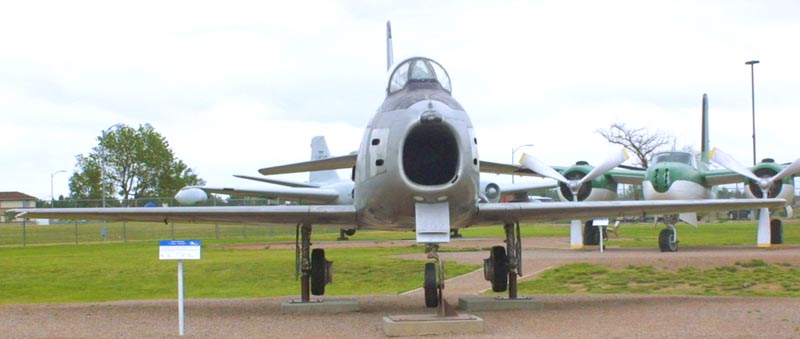
|
|
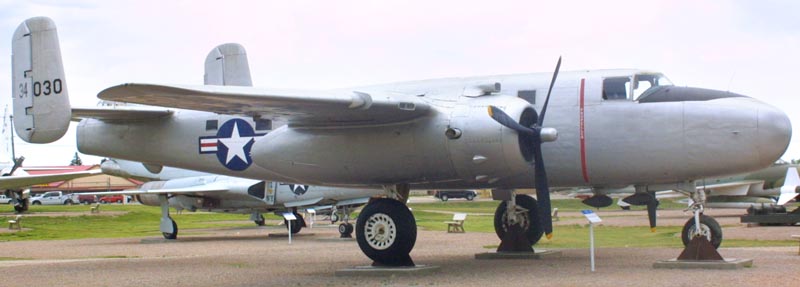
|
This is a B-25 bomber, from the Second World
War. It was used on the famous doolittle raid, the first attack on the Japanese
homeland.
|